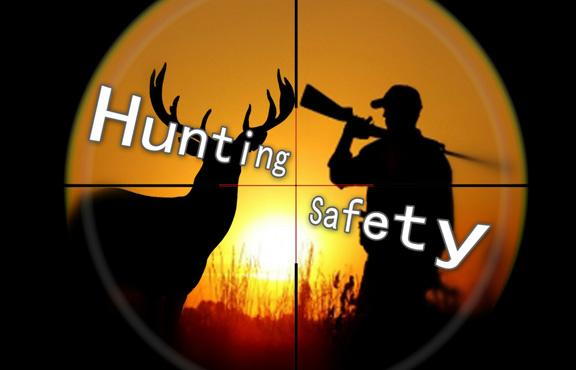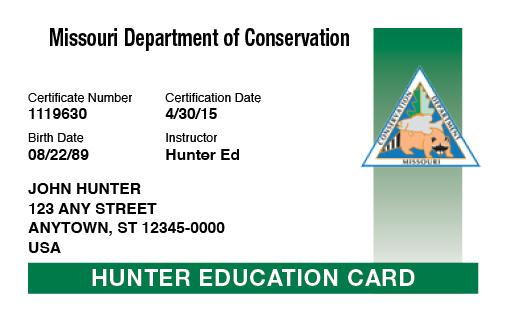HUNTER SAFETY: A Criminal Defense Attorney’s Perspective
- posted: May 03, 2021
In the practice of law handling criminal defense cases, it has been my experience that often many of my clients are addicted to drugs or alcohol, have prior criminal and juvenile records, and some have committed our society’s most horrible offenses. Like many criminal defense attorneys, over the years I have found myself struggling to portray some of my clients in a positive light. Rarely does the public, law enforcement, and the prosecuting attorney agree with my portrayal from the outset.
In early January 1998, I was hired by a client who was a genuinely nice guy. Like most who know the circumstances which led to his arrest, I soon learned my new client was also a victim. He was a victim of very unfortunate circumstances, a victim of his and his hunting buddy’s illegal conduct, and a victim of his less-than-cautious actions.
When I first met with my client, I observed a well-dressed, articulate, and sincere young man. I learned he was married, had a three-year-old daughter, a prior military background, was well employed in the Missouri mining industry, and was an avid sportsman. He was not my typical client. At our first meeting he openly told his story.
On December 13, 1997, my client and five of his friends were hunting deer in rural Iron County, Missouri. He freely admitted the post-season deer hunt was illegal as was the technique they were using. Each hunter was equipped with a vehicle, a citizen’s band radio, and a high-powered rifle. Hunting dogs had been released and were actively searching for the scent of deer.

The young men listened as the dogs signaled, they had hit a hot trail. In constant radio contact, the men traveled the gravel roads and parked near likely crossings waiting for the dogs to drive a deer into the open.
Shots rang out. Game was on the move. Radio activity increased as the young men attempted to determine who had fired. My client had heard the shots and determined they had come from farther down the ridge. He radioed the others and advised he would drive down and check out the area.
As he drove down the ridge, he saw one of his companions’ truck. He stopped behind the truck, got out, and heard the dogs “strike red hot” in the hollow below. Deer would certainly be coming out of the hollow! My client grabbed his Remington, Model 700, .270 deer rifle in anticipation of getting a shot. As he neared the back of his truck, the circumstances clearly indicated a strong likelihood of hunting success.
Someone had already fired shots, the dogs were running hot, deer were moving. My client’s adrenaline was pumping, and he knew if he saw a deer, he would only have a brief moment to get off a shot. Then...there it was! Up through the brush, over a hundred yards away, he saw it! A deer was running through the brush to get away from the dogs. With no time to delay, he raised his rifle, looked through his scope, and with the sun slightly in his eyes he located his target and squeezed his trigger.
As quickly as it had appeared, the deer was gone. Knowing the deer was headed for the road, he got back into his truck, backed up the road, and looked for where the deer might have crossed. When he finally determined the deer had not crossed the road, he stopped, got out of his truck, and started walking towards where the deer was located when he shot.
With excitement and anticipation, he looked for a blood trail or the fallen deer. With shock and horror, he found the dead body of one of his hunting buddies. A .270 bullet from my client’s rifle had passed through the young man’s chest, killing him instantly. The deer my client had seen was his friend in light brown coveralls. The man was only 23 years old and had a wife and two small children.
The day had turned from a lighthearted and exciting outing with friends to the last day of a young man’s life and the first day of my client’s life with the knowledge he had killed his friend. It was also my client’s first introduction to the criminal justice system.

My client was read his rights and interrogated. He was subsequently charged with involuntary manslaughter, arrested, fingerprinted, his mugshot was taken, and he was required to post a cash bond. A truly nice guy had now been labeled as a criminal and was facing a felony conviction and seven years in prison.
Under Missouri law, a person is guilty of involuntary manslaughter if that person recklessly causes the death of another person. Did my client act recklessly? That was the technical legal question. Missouri law states, “A person ‘acts recklessly’ or is reckless when he consciously disregards a substantial and unjustifiable risk that circumstances exist or that a result will follow, and such disregard constitutes a gross deviation from the standard of care which a reasonable person would exercise in the situation.”
At the preliminary hearing, the State presented its evidence. We did not dispute the facts. My client had, in fact, caused the death of his friend and he had given a full confession. We simply argued that my client was not aware of a “substantial and unjustifiable” risk and was, therefore, not reckless. We received support for our position from the witnesses’ testimony that the victim was wearing brown coveralls, “did look a lot like a deer,” and was not wearing any hunter orange.
The judge disagreed and found there was “reason to believe” my client was “reckless.” The basis of the ruling was the fact my client was aware the victim was near because he had heard shots in that area and had parked behind the victim’s unoccupied truck. When he took the shot, the judge stated, he should have been certain of the identity of his target. My client was bound over to stand trial in the circuit court. Any negligence on the part of the victim did not excuse my client’s actions.
At this point, my client had already punished himself, and would continue to punish himself for the rest of his life for what he had done. He had to hire an attorney and he faced a felony conviction and seven years in prison. Fortunately, the prosecuting attorney, the deputy sheriffs, the conservation agent, my client, and I were able to find some common ground. We agreed the victim’s death was a horribly unfortunate accident, and we would all like to see some good come of the tragedy. We agreed the most important thing we could do for society would be to make sure this story was told. Our hope was that by having it told, lives would be saved in the future.
The prosecuting attorney eventually agreed to a very generous resolution of the case. He agreed to dismiss the involuntary manslaughter charge if my client would comply with several conditions. The conditions were
- to refrain from violating any Federal, State or Local laws;
- to notify the Circuit Court of Iron County, Missouri, of any change of address, change of employment, or arrest for any cause;
- to plead guilty to the misdemeanor charge of attempting to take deer in closed season and pay a $500.00 fine;
- to attend and speak about his involvement in the fatal hunting accident at the Missouri State Hunter Education Association Conference in January or February of 1999;
- to participate in and be the subject of a video production for the Hunter Accident Investigation Academy relating to his involvement in a fatal hunting accident and to allow the Missouri Department of Conservation to use any videotape(s) produced for any purpose deemed appropriate by the Missouri Department of Conservation; and
- to voluntarily relinquish his Missouri hunting privileges for a period of three (3) years without the necessity of a hearing and waive such hearing and all appeals of such revocation.
My client agreed.
Although he will not have a felony conviction on his record and will not serve time in prison, he was forced to look that potential square in the eye. Will individuals who recklessly cause hunting fatalities in the future be treated in a similar fashion? I seriously doubt it. I believe our society, our law enforcement officers, and the Missouri Department of Conservation are ready to do whatever it takes to send the message that recklessness will not be tolerated in hunting situations.

The State of Missouri and the Missouri Department of Conservation have plenty of tools to send that message. One of the most effective tools is the Missouri Hunter Education Program. That program has, no doubt, saved lives. My client’s videotaped story is now a part of that program. I hope his story adds an additional element of realism to Missouri Hunter Education. I also hope his story will inspire personal responsibility. But, most importantly, I hope lives will be saved in the process. I pray no other Missourian loses a loved one to hunting recklessness and no hunter feels compelled to tell their attorney what my client told me at our first meeting, “I never thought it would happen to me.”



